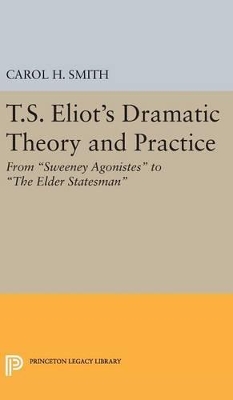Although there have been innumerable studies of T. S. Eliot, this is the first to examine closely the changes in his dramatic practice and to relate them to his artistic and intellectual development. Professor Smith finds Eliot's dramatic theory rooted in his conception of the need for order in religion and art; she traces this concept as it evolved from the overtly religious The Rock and Murder in the Cathedral through such symbolic drawing-room plays as The Family Reunion, The Cocktail Party, and The Confidential Clerk, to Eliot's latest study of human and divine love in The Elder Statesman. Carol H. Smith explores Eliot's interest in the jazz rhythms of the English music hall, in the mythical method of Yeats and Joyce, and in the work of the Cambridge School of Classical Anthropology. Originally published in 1963. The Princeton Legacy Library uses the latest print-on-demand technology to again make available previously out-of-print books from the distinguished backlist of Princeton University Press. These editions preserve the original texts of these important books while presenting them in durable paperback and hardcover editions.
The goal of the Princeton Legacy Library is to vastly increase access to the rich scholarly heritage found in the thousands of books published by Princeton University Press since its founding in 1905.
- ISBN10 0691649626
- ISBN13 9780691649627
- Publish Date 19 April 2016 (first published 21 March 1963)
- Publish Status Active
- Publish Country US
- Imprint Princeton University Press
- Format Hardcover
- Pages 264
- Language English
- URL https://press.princeton.edu/titles/4041.html
